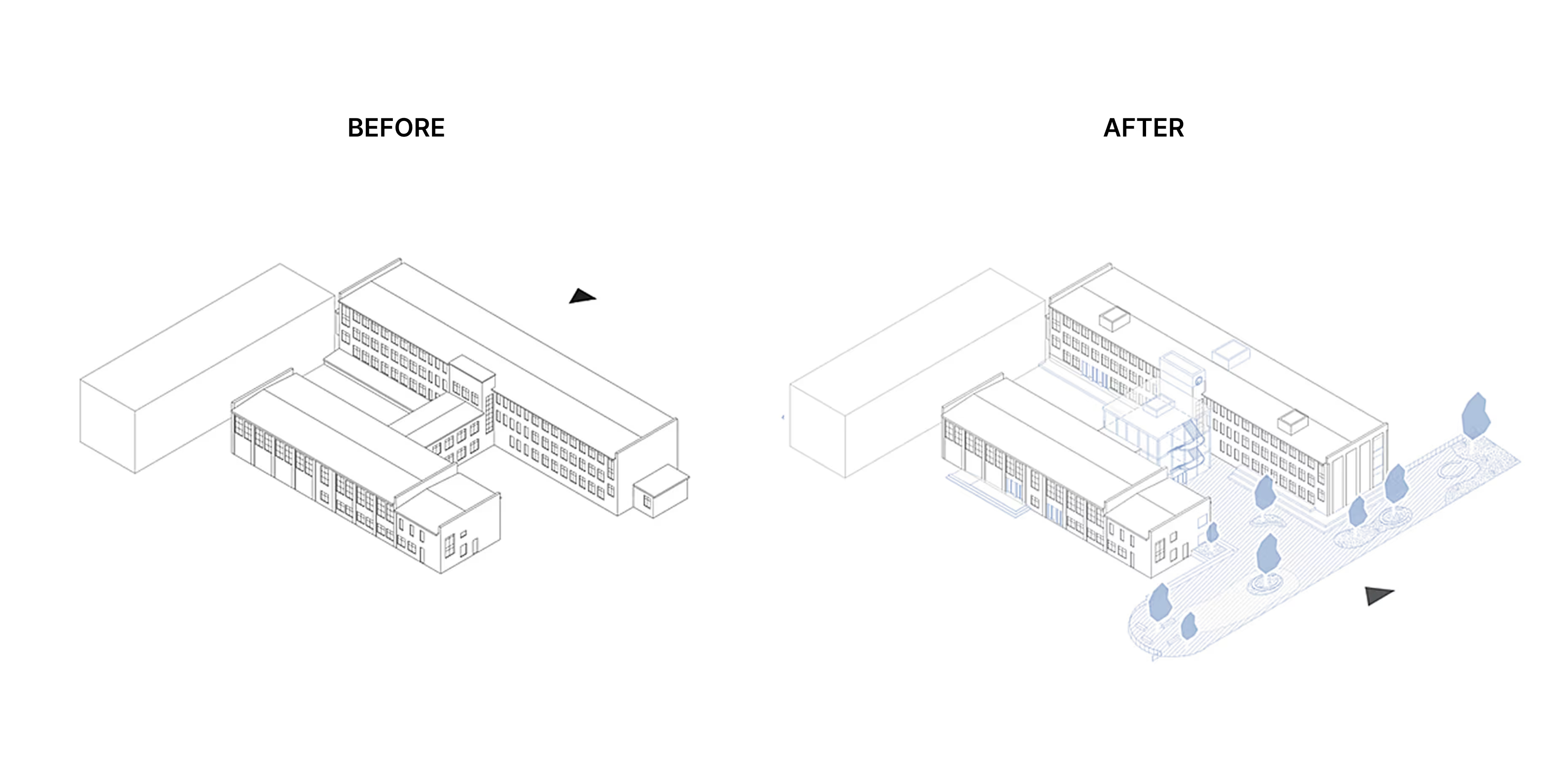
On the initiative of Mykhailo Fedorov, Vice Prime Minister for Innovation, Education, Science and Technology Development and Minister of Digital Transformation, the team of the Ministry of Education and Science has launched fundamental transformations in the education sector, from kindergartens to higher education institutions.
To launch systemic changes in the secondary school infrastructure, the Big City Lab team partnered with the Rebuild the Wonderful NGO, which includes Do Architects (Lithuania), Kavakava (Estonia), and Archikon (Hungary), architectural bureaus that have developed architectural solutions for transforming typical schools in their countries. Ukrainian architects from Oksa, Pecker and Partners, and Kumeiko Architects architectural bureaus created the designs to meet Ukrainian state building codes.
The project was funded by the Mariupol Reborn NGO, DTEK and Metinvest.
While working on the Mariupol 2040 vision, we discovered that 72% of all schools in the city are 5 architectural building types. A similar situation can be observed in other cities. If we look at the schools destroyed by the war, we see that one-third of them are the same five building types across Ukraine. Thus, five projects are enough for the government to rebuild or reconstruct thousands of schools to a high standard.
That is why we have developed 5 transformation concepts that answer what build back better means.
The H3-type school has a large number of valuable elements: brick facades, large windows, wooden floors, high prefabricated ceilings in the dining room and gym. The shape of the building divides the garden into potential courtyards. However, these features are not used: the building does not interact with the environment. The courtyards, which could become the centre of the school, remain unused. The entrance is small, dark and narrow.
The pilot school is located in the Kharkiv region. The entrance area is a membrane between the school and the city. The location works as a forum: it is open to the public, can host events, and serves as a meeting place for city residents. There are children's and sports grounds and a skate park.
By now, complete design and estimate documentation have been developed.

The proposed design is aimed at enhancing the undiscovered qualities using local materials. The entrance is moved to the central axis of the building with the addition of an extension. This wing becomes a transitional element and the social core of the building. It acts as a gateway between the school and the garden and connects the two wings of the building, filled with fragmented public spaces and common passages. It is the only new volume added to the existing building.
The entrance square acts as the central element of the building, its main decoration and an important part of the overall school experience. The staircase of the square is an architectural object, a place to sit, and a space for movement. It allows for the addition of a new playground and skatepark while leaving space for relaxation in a tranquil garden with benches.
The top floor of the central axis is dedicated to the library. Its shelves and tables are made of wood, and the translucent roof lets in natural light. Here, students can not only borrow books, but also work, study, read and relax. After school, the library is also open to the community, with access from the central staircase.


The brick extension on the faсade becomes the centre of the school, with a glass entrance to the courtyard and serves as a bridge between the recreational and educational wings of the school. The top floor is reserved for the new library.
Using staircases in the corridors as bleachers, benches, tables, and internal windows creates a circulation system in the building and makes the break time more fulfilling. Wood as the main material creates a cosy atmosphere and provides a variety of seating options, both alone and in groups. Students can look into the classrooms at any time through the internal windows.


The main adjustment involves a significant change to the building layout, centred around the relocation of the main entrance and main staircase. These elements have been relocated to align precisely with the central axis, creating a central public hub and serving as a coherent transitional axis throughout the structure. While the classrooms, gymnasium and canteen retain their original layout, the corridors and staircases have been modified to create transparent, easy-to-navigate common spaces.
The reorganisation aims to improve the overall openness and ease of navigation in the building.
{{slider-33="/sliders"}}